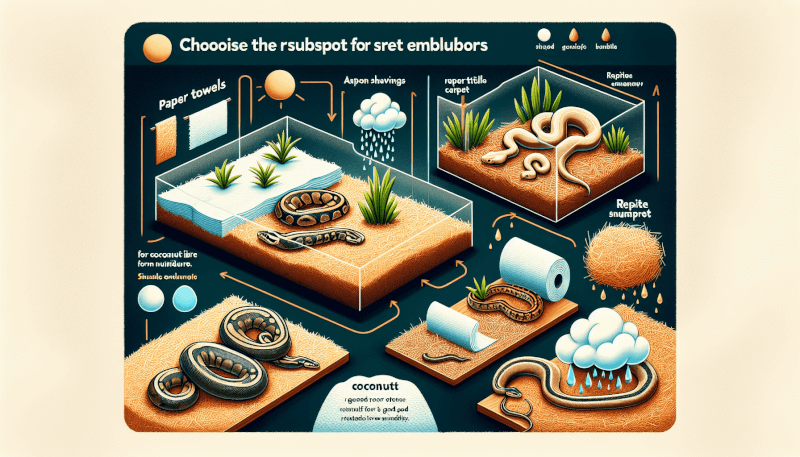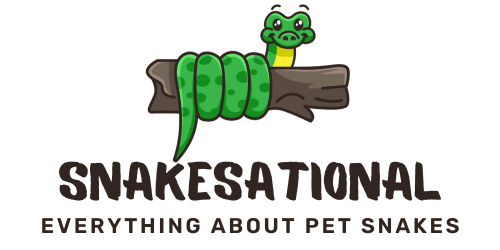If you’re a proud owner of a pet snake, then you know how important it is to create a comfortable and safe environment for them to thrive. One key aspect of their enclosure is the substrate, which plays a crucial role in their overall well-being. From providing a naturalistic habitat to aiding in maintaining humidity levels, the right substrate can make a world of difference for your reptilian friend. In this ultimate guide, we will explore various substrate options available in the market, discussing their pros and cons, to help you make an informed decision and ensure your pet snake’s enclosure is nothing short of perfect. So, let’s dive right in and create a cozy home for your scaly companion!
Understanding the Importance of Substrate
Creating a naturalistic environment is essential for the overall well-being of your pet snake. Choosing the right substrate material is an important aspect of creating an environment that closely mimics their natural habitat. Not only does the substrate provide a comfortable surface for your snake to slither and rest upon, but it also plays a crucial role in maintaining optimal humidity levels within the enclosure. Furthermore, the substrate can provide a sense of comfort and security for your snake, allowing them to feel at ease in their enclosure.
Choosing the Right Substrate Material
When it comes to selecting the right substrate for your pet snake’s enclosure, you have several options to choose from. Each substrate material has its own unique set of benefits and considerations. Let’s take a closer look at some of the most popular substrate options available:
Newspaper
Newspaper is a common and affordable substrate choice for snake enclosures. It provides a clean, odor-free, and easy-to-maintain surface for your snake to move around on. However, newspaper may not be the most aesthetically pleasing option and does not offer as much insulation or humidity retention as other substrates.
Reptile Carpet
Reptile carpet is a reusable and easy-to-clean substrate option. It is made of synthetic fibers and provides a natural-looking surface for your snake. Reptile carpet maintains humidity levels reasonably well and allows for easy spot cleaning. However, it may not be the most suitable option for species that burrow or require higher humidity levels.
Aspen Shavings
Aspen shavings are a popular choice for snake enclosures. They are soft, odor-absorbent, and allow for easy burrowing for species that exhibit that behavior. Aspen shavings also offer good humidity retention and are safe for most snake species. However, they can be quite dusty and may not be the best option for snakes with respiratory sensitivities.
Cypress Mulch
Cypress mulch is a natural substrate option that provides excellent humidity retention and insulation properties. It creates a visually appealing and naturalistic environment for your snake. Cypress mulch is suitable for most snake species, but it should be avoided for species that are known to ingest substrate materials.
Coconut Fiber Substrate
Coconut fiber substrate, also known as coconut husk or coco coir, is a natural and environmentally friendly option. It provides good humidity retention, excellent burrowing opportunities, and a natural aesthetic. However, coconut fiber may need to be rehydrated regularly to maintain adequate humidity levels.
Orchid Bark
Orchid bark is a popular choice for snake owners who prefer a more natural and decorative look. It offers good moisture control and is good for species that enjoy burrowing. Orchid bark provides texture and enrichment to the enclosure, but it may not retain humidity levels as effectively compared to other substrate options.
Sphagnum Moss
Sphagnum moss is often used as an additional layer or as a spot substrate for snakes that require higher humidity levels. It absorbs and retains moisture well, promoting a humid microclimate within the enclosure. Sphagnum moss is great for species that thrive in moist environments but may need to be replaced regularly to prevent mold or bacterial growth.
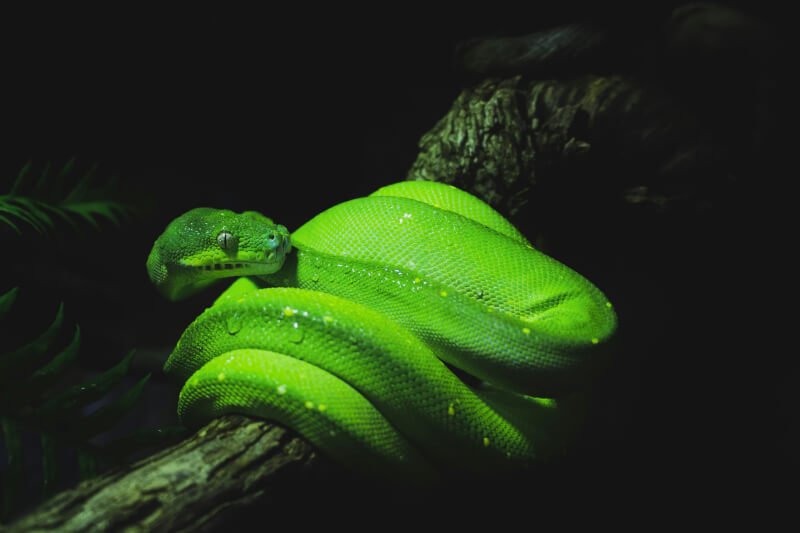
Considerations Based on Snake Species
Different snake species have various habitat requirements, including specific substrate preferences. It is essential to consider the natural habitat of your snake species when choosing the appropriate substrate. Here are some considerations based on different types of snakes:
Desert-Dwelling Snakes
Desert-dwelling snakes, such as the Western Diamondback Rattlesnake or the Gopher Snake, require a substrate that mimics arid and sandy environments. A combination of sand and a mix of small rocks or pebbles can provide a suitable substrate for these species.
Humidity-Loving Species
Some snake species, like the Green Tree Python or the Ball Python, thrive in high humidity environments. A substrate that retains moisture well, such as coconut fiber or cypress mulch, is ideal for these species. Adding sphagnum moss as a spot substrate can also help maintain localized high humidity areas.
Burrowing Snakes
Certain snakes, like the Kenyan Sand Boa or the Hognose Snake, are burrowing species and require a substrate that allows for easy digging and burrowing behavior. Options like aspen shavings or a mixture of coconut fiber and sand can provide a suitable substrate for these snakes.
Tree-Dwelling Snakes
Tree-dwelling species, such as the Emerald Tree Boa or the Green Tree Python, require elevated surfaces and branch structures within their enclosure. While substrate is not as critical for these snakes, a solid base with climbing structures can provide a sense of security and enrichment.
Size and Depth of Substrate
When determining the appropriate size and depth of substrate for your pet snake’s enclosure, it is crucial to consider the snake’s size, behavior, and natural habitat. Here are some key factors to keep in mind:
Appropriate Thickness
The substrate should have an appropriate thickness to allow your snake to move freely without causing any discomfort or difficulty. A thickness of 1-2 inches is generally recommended for most snake species. Smaller species may require thinner substrate layers, while larger species might benefit from a slightly thicker layer.
Proper Depth for Burrowing
If you have a burrowing species, it is important to provide a substrate depth that allows them to engage in their natural digging behavior. A depth of 4-6 inches is generally sufficient for burrowing snakes, allowing them enough space to create tunnels or hide within the substrate.

Controversial Substrates to Avoid
While there are various substrate options available, there are also some substances that should be avoided due to their potential risks to your pet snake’s health. Here are some controversial substrates that should be avoided:
Cedar and Pine Shavings
Cedar and pine shavings can release toxic phenols that can be harmful to your snake’s respiratory system and overall health. These substrates should be avoided to prevent respiratory issues and possible liver damage.
Sand
Sand, particularly fine-grain sand, can be problematic for snake species that burrow. Ingesting sand particles can lead to impaction, a condition where the snake’s digestive system becomes blocked. While sand may work for certain desert-dwelling species, it is generally not recommended as a substrate option.
Corn Cob Bedding
Corn cob bedding, commonly used for small mammals, is not suitable for snake enclosures. Snakes may accidentally ingest the corn cob bedding, which can cause intestinal blockages and may require surgical intervention.
Substrate Maintenance and Cleaning
Proper maintenance and cleaning of the substrate are crucial to ensure a healthy and hygienic environment for your pet snake. Here are some essential tips for substrate maintenance:
Spot Cleaning
Regular spot cleaning should be performed to remove any waste or soiled areas in the substrate. This can help prevent the buildup of bacteria or the growth of mold. Spot cleaning should be done as needed, usually every few days or whenever waste is visible.
Partial Substrate Replacements
Partial substrate replacements should be conducted periodically to refresh the enclosure and maintain cleanliness. Remove a portion of the substrate, replacing it with fresh material while ensuring the overall integrity of the snake’s burrows or other structures within the enclosure is maintained.
Complete Substrate Changes
Occasionally, a complete substrate change may be necessary to ensure optimal hygiene. This typically involves removing all of the substrate material, thoroughly cleaning the enclosure, and replacing it with fresh substrate. Complete substrate changes should be performed on an as-needed basis, typically every few months, or sooner if there are specific health concerns or excessive odor.
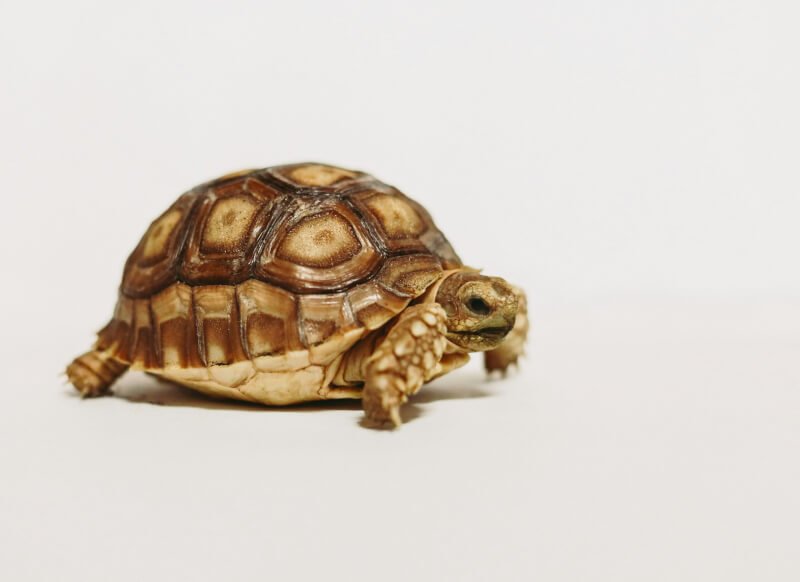
Substrate Accessories
To enhance your snake’s enclosure and provide additional comfort and enrichment, consider incorporating various substrate accessories. Here are some options to consider:
Hides and Caves
Providing hides and caves within the substrate allows your snake to feel secure and have a designated space to retreat to. These can be made of various materials, such as rocks, logs, or commercially available hides, and should be placed strategically throughout the enclosure.
Live Plants
Adding live plants to the enclosure not only enhances its aesthetic appeal but also provides your snake with a more naturalistic environment. Live plants can help maintain humidity levels, provide additional hiding spots, and even improve air quality within the enclosure. Ensure that the plants selected are non-toxic to your snake.
Branches and Climbing Structures
For tree-dwelling species or snakes that enjoy climbing, incorporating branches or climbing structures within the enclosure can provide valuable opportunities for exercise and stimulation. Ensure that these structures are sturdy and securely placed to prevent any potential injuries or escapes.
Understanding the Risks and Benefits
Choosing the right substrate for your pet snake’s enclosure involves considering the balance between the potential risks and benefits. Here are some key factors to keep in mind:
Risk of Impaction
Certain substrate materials, such as sand or small particulate matter, can pose a risk of impaction if ingested by your snake. Impaction occurs when the digestive system becomes obstructed, potentially leading to serious health issues. It is essential to choose a substrate that reduces the risk of impaction, especially for species that are prone to burrowing or have a history of ingesting substrate material.
Benefits of Digestion and Shedding
Appropriate substrate selection can facilitate better digestion and shedding for your snake. A suitable substrate provides a comfortable and supportive surface for your snake to move and rest on, aiding in the digestion process. Additionally, a substrate that retains moisture can promote healthy shedding by providing the necessary humidity levels to facilitate the shedding process.
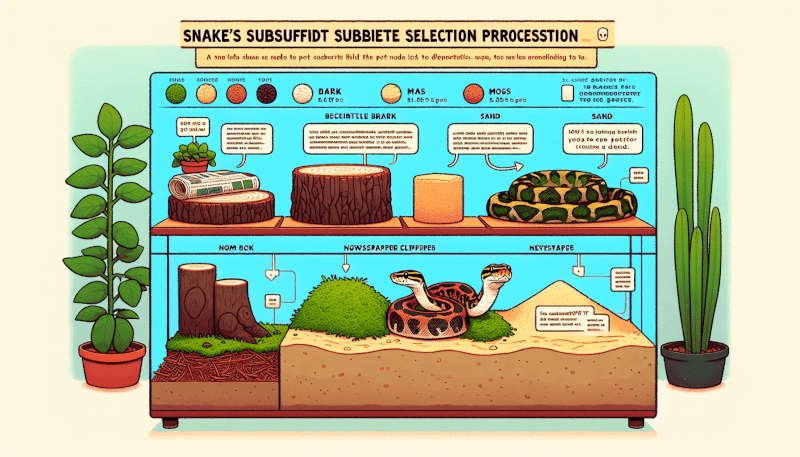
Additional Considerations
While selecting the right substrate material for your pet snake is crucial, there are some additional considerations to keep in mind:
Cost and Availability
Some substrate materials may be more expensive or harder to find than others. Consider your budget and the availability of the substrate options in your area when making your selection.
Allergies and Sensitivities
Some individuals may have allergies or sensitivities to certain substrate materials. If you or someone in your household has allergies or respiratory issues, it is important to choose a substrate that does not exacerbate these conditions.
Personal Preferences
Ultimately, your personal preferences and aesthetics may also come into play when selecting a substrate. While considering the needs of your snake is essential, it is important to choose a substrate that you feel comfortable maintaining and that suits your desired visual appeal for the enclosure.
Seeking Professional Advice
If you are unsure or have specific questions about the best substrate for your pet snake, it is always a good idea to seek professional advice. Consulting a herpetologist or reptile veterinarian can provide valuable insights tailored to your snake’s specific needs and help ensure you make the best substrate choice for their overall health and well-being. Additionally, joining online reptile communities and forums can provide a wealth of information and advice from experienced snake owners who can share their personal experiences and recommendations.
In conclusion, choosing the right substrate for your pet snake’s enclosure is a crucial decision that impacts their overall health, comfort, and security. By understanding the importance of substrate, considering the needs of your snake species, and following proper maintenance and cleaning routines, you can create an optimal and naturalistic environment for your scaly companion. Remember to always prioritize the well-being of your snake and seek professional advice when needed, as each snake species may have unique substrate requirements.
